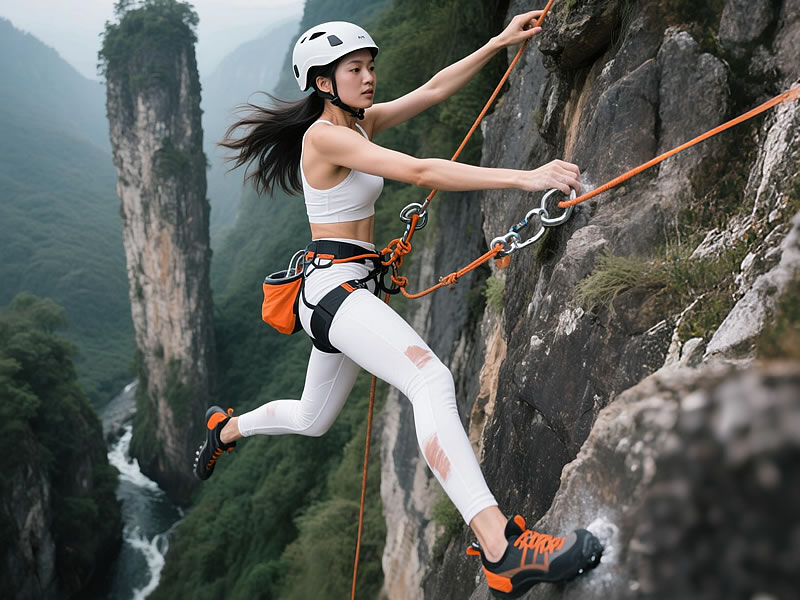What is a climbing swivel ring used for?
A climbing swivel ring is a critical tool in vertical sports and technical rescue operations, designed to enhance safety and efficiency by addressing one of the most common challenges: rope twists and entanglement. Whether you’re scaling a multi-pitch rock face, rigging an anchor system, or performing aerial tree work, this compact device plays a vital role in ensuring smooth, controlled movement. Let’s explore its functions, applications, and why it’s a must-have for professionals and enthusiasts alike.

Core Function: Eliminating Rope Twists
During dynamic activities like climbing or hauling gear, ropes naturally twist due to friction, movement, or uneven loads. A swivel ring features a rotating mechanism (often with ball bearings) that allows connected equipment—such as carabiners, pulleys, or ropes—to spin freely. This rotation neutralizes torque, preventing dangerous tangles and reducing wear on gear. By minimizing friction, it also lowers the risk of rope degradation, extending equipment lifespan.
Key Applications Across Industries
- Rock Climbing & MountaineeringOn multi-directional anchors or traversing routes, swivel rings enable climbers to adjust positions without twisting ropes. They’re especially useful in aid climbing or when using haul systems for heavy loads.
- Arboriculture & Tree WorkArborists rely on swivel rings to safely maneuver chainsaws, rigging lines, or suspended loads, ensuring smooth pivoting during cutting or lowering operations.
- Rescue & Industrial Rope AccessIn high-stakes scenarios, rescue teams use swivel rings to reduce entanglement risks during patient lifts or complex rigging setups.
Choosing the Right Swivel Ring
Not all swivel rings are equal. Consider these factors:
- Material: Stainless steel offers durability for harsh environments, while aluminum alloys are lightweight for sport climbing.
- Load Capacity: Match the device’s rated strength (e.g., 25 kN+) to your activity’s demands.
- Rotation Smoothness: Opt for models with sealed bearings to resist dirt and ensure consistent performance.
- Certifications: Look for UIAA or CE markings to guarantee safety standards.
Safety Tips for Optimal Use
- Inspect Regularly: Check for cracks, corrosion, or stiffness in rotation before each use.
- Avoid Cross-Loading: Ensure the swivel ring aligns correctly with attached carabiners or connectors.
- Mind Compatibility: Pair only with gear rated for similar loads and purposes.
Why It’s Indispensable
Beyond preventing tangles, a climbing swivel ring boosts efficiency by reducing setup time and physical strain. Its ability to handle multi-directional forces makes it ideal for complex systems, while its compact size ensures it won’t weigh down your kit. For climbers pushing technical limits or professionals prioritizing safety, this tool is a game-changer.
Final Note: Always prioritize quality and adhere to manufacturer guidelines. A well-chosen swivel ring isn’t just gear—it’s peace of mind on the vertical frontier.






